Abstract
Clostridium thermohydrosulfuricum YM3 and C. thermocellum YM4 were isolated from a coculture which was obtained from an enrichment culture inoculated with volcanic soil in Izu Peninsula, Japan. Strain YM3 had advantages over reported C. thermohydrosulfuricum strains in that it fermented inulin and could accumulate ethanol up to 1.3% (wt/vol). The highest ethanol yield obtained was 1.96 mol/mol of anhydroglucose unit in cellobiose. Strain YM4 had features different from those reported in C. thermocellum strains: it formed spores rarely (at a frequency of <10-5), it required CO2 and Na2CO3 for growth, and it fermented sucrose. Strain YM4 completely decomposed 1% Avicel within 25 h when the inoculum constituted 2% of the culture medium volume, and it produced 0.22 U of Avicelase and 2.21 U of carboxymethylcellulase per ml of the medium. The doubling times on Avicel, cellobiose, and glucose were 2.7, 1.1, and 1.6 h, respectively. Reconstructed cocultures of strains YM3 and YM4 were very stable and degraded Avicel more rapidly than did strain YM4 monoculture. Without yeast extract, neither microorganism was able to grow. However, the coculture grew on cellulose without yeast extract and produced ethanol in high yield. Moreover, cell-free spent culture broth of strain YM3 could replace yeast extract in supporting the growth of strain YM4. The symbiotic relationship of the two bacteria in cellulose fermentation is probably a case of mutualism.
Full text
PDF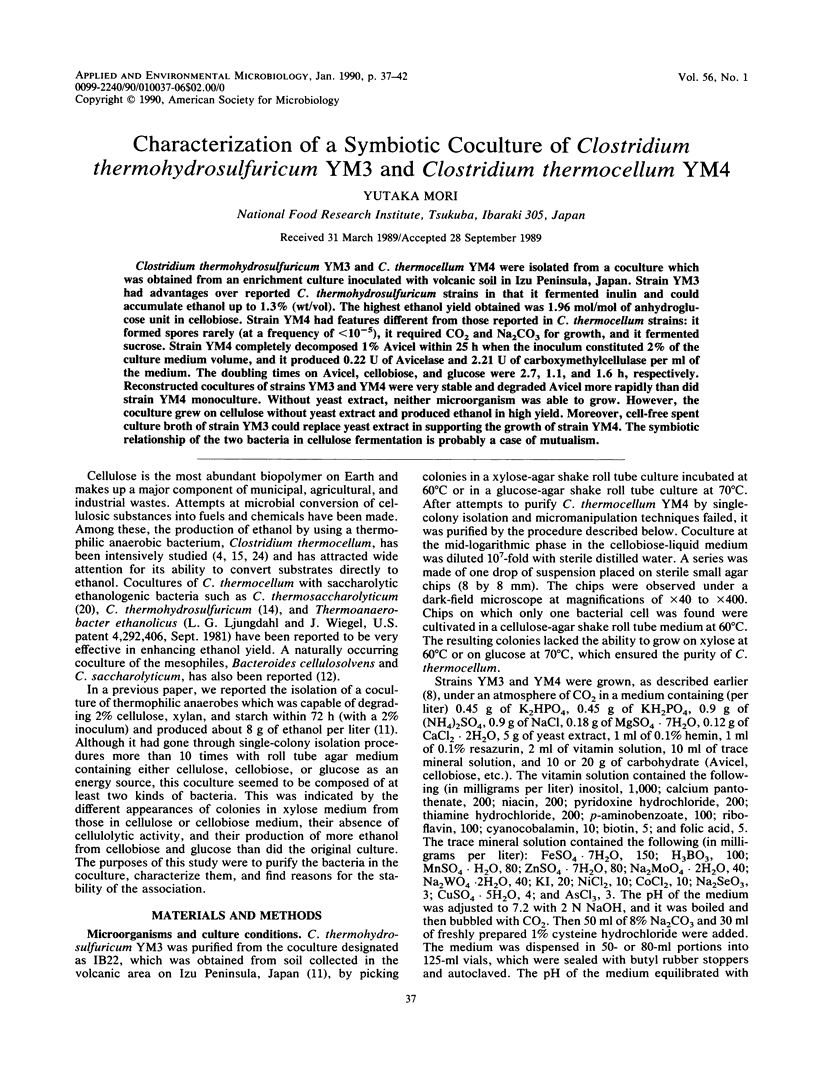
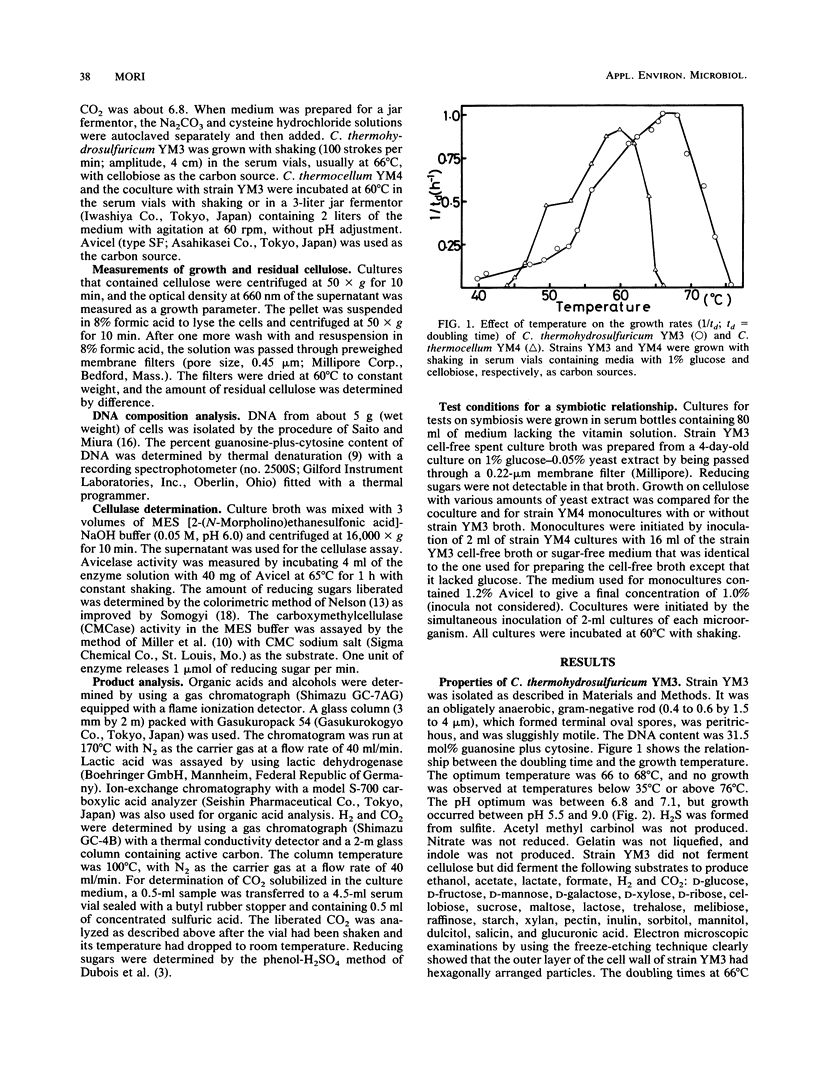
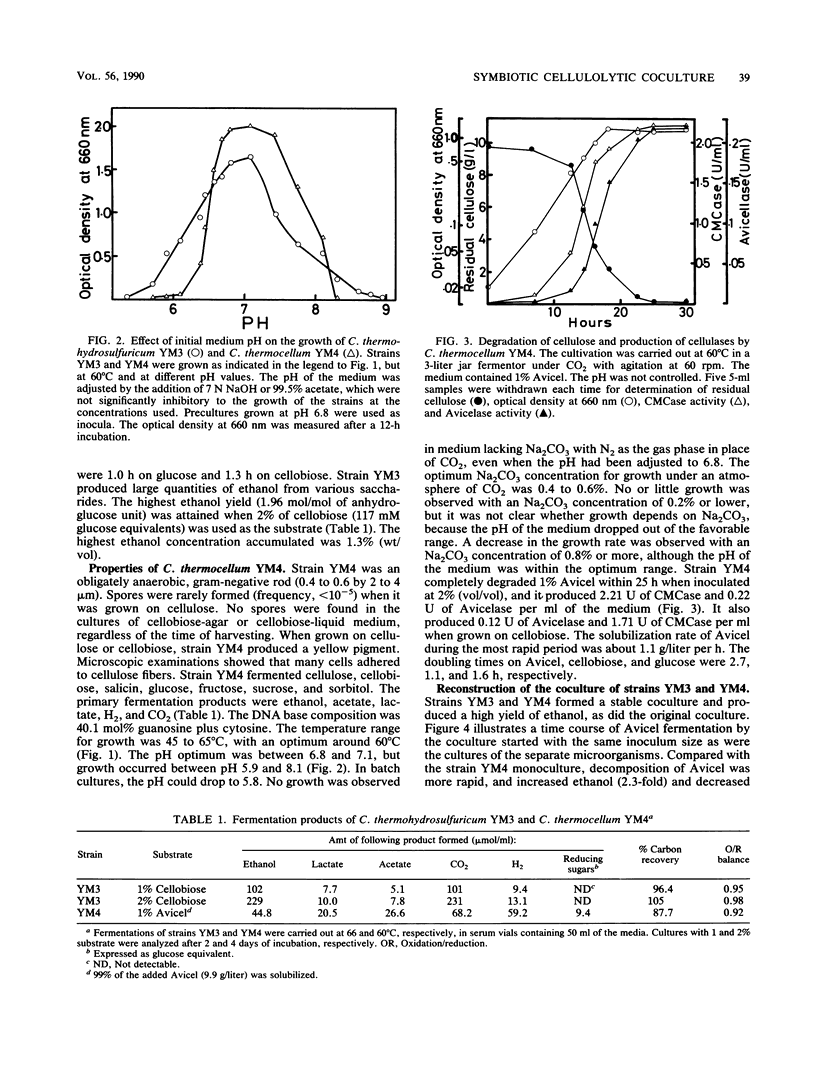
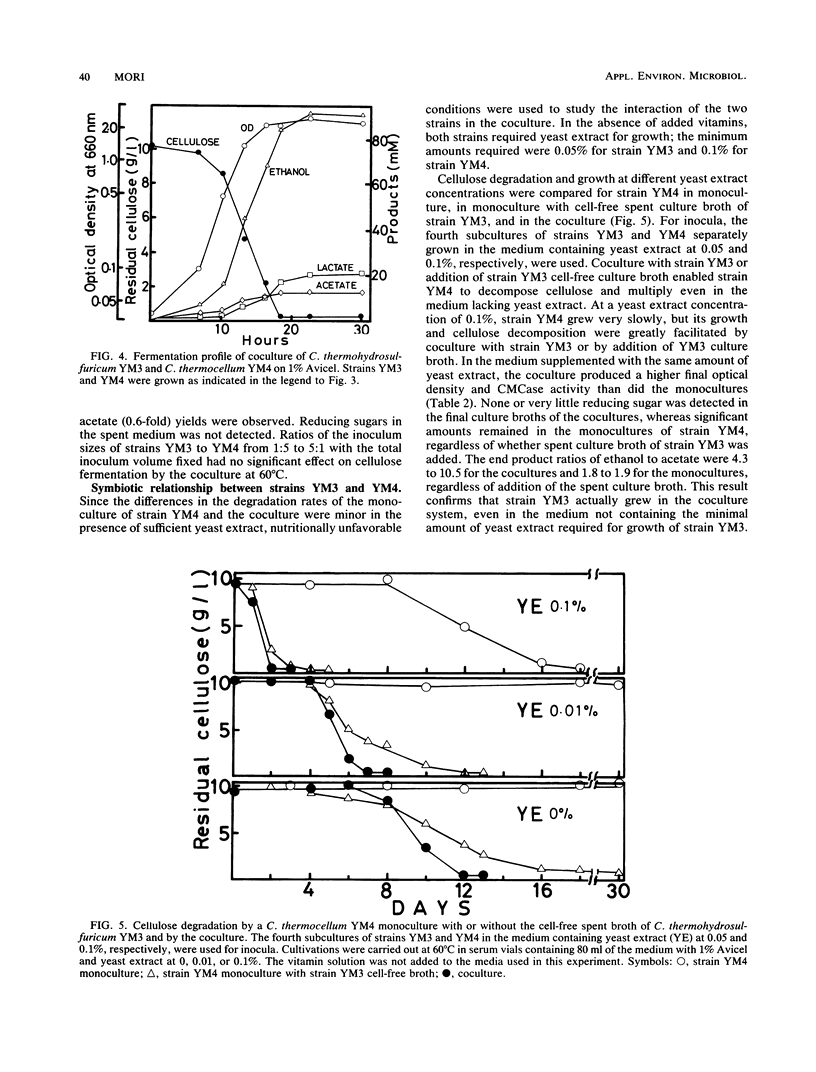
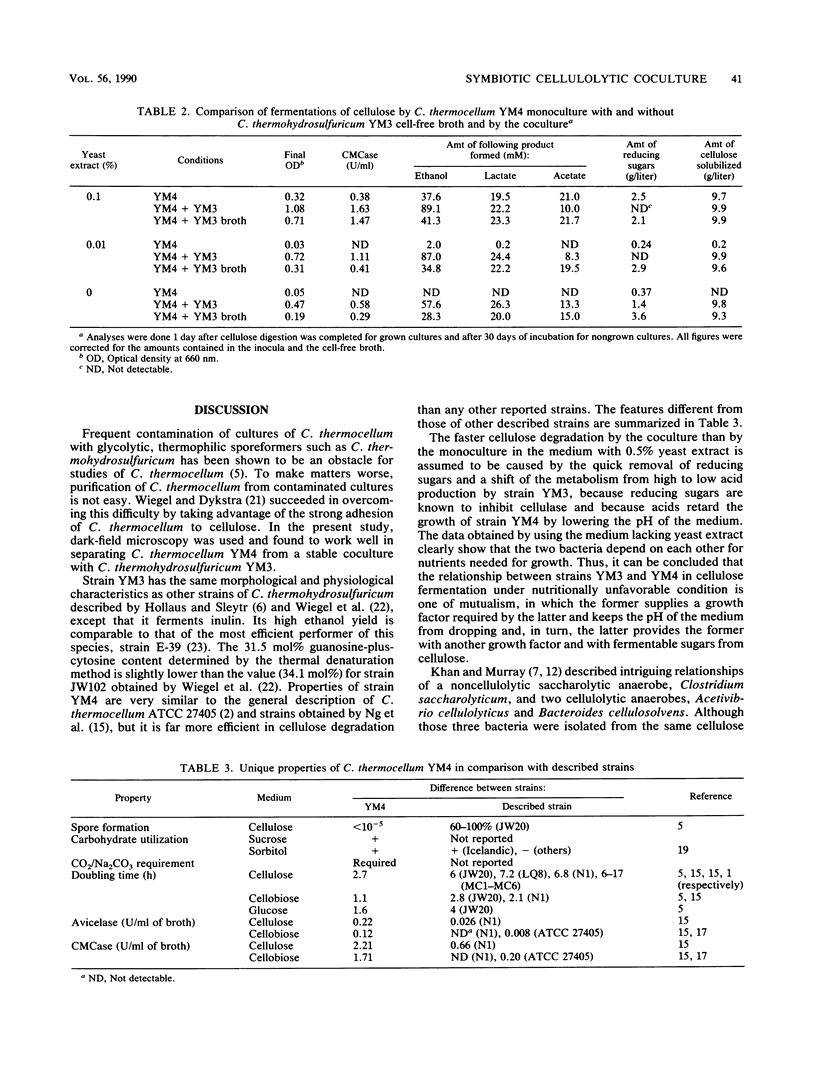
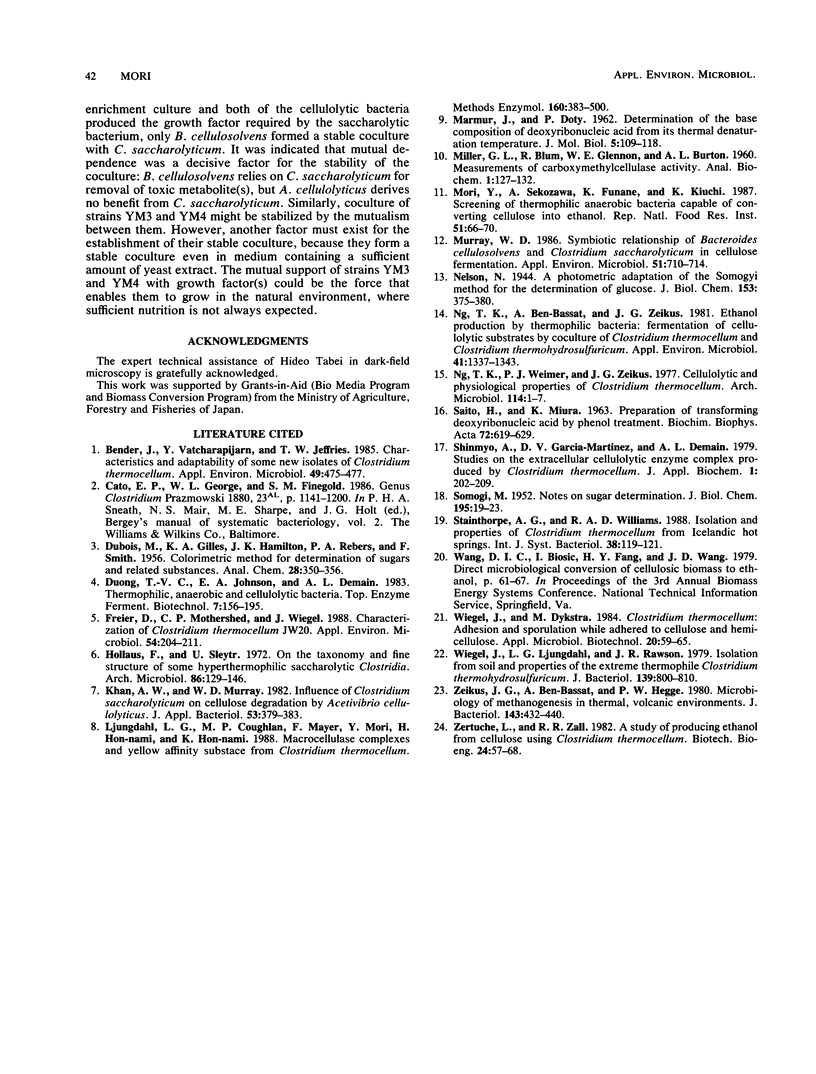
Selected References
These references are in PubMed. This may not be the complete list of references from this article.
- Bender J., Vatcharapijarn Y., Jeffries T. W. Characteristics and Adaptability of Some New Isolates of Clostridium thermocellum. Appl Environ Microbiol. 1985 Mar;49(3):475–477. doi: 10.1128/aem.49.3.475-477.1985. [DOI] [PMC free article] [PubMed] [Google Scholar]
- Freier Doris, Mothershed Cheryle P., Wiegel Juergen. Characterization of Clostridium thermocellum JW20. Appl Environ Microbiol. 1988 Jan;54(1):204–211. doi: 10.1128/aem.54.1.204-211.1988. [DOI] [PMC free article] [PubMed] [Google Scholar]
- Hollaus F., Sleytr U. On the taxonomy and fine structure of some hyperthermophilic saccharolytic Clostridia. Arch Mikrobiol. 1972;86(2):129–146. doi: 10.1007/BF00413368. [DOI] [PubMed] [Google Scholar]
- MARMUR J., DOTY P. Determination of the base composition of deoxyribonucleic acid from its thermal denaturation temperature. J Mol Biol. 1962 Jul;5:109–118. doi: 10.1016/s0022-2836(62)80066-7. [DOI] [PubMed] [Google Scholar]
- Murray W. D. Symbiotic Relationship of Bacteroides cellulosolvens and Clostridium saccharolyticum in Cellulose Fermentation. Appl Environ Microbiol. 1986 Apr;51(4):710–714. doi: 10.1128/aem.51.4.710-714.1986. [DOI] [PMC free article] [PubMed] [Google Scholar]
- Ng T. K., Ben-Bassat A., Zeikus J. G. Ethanol Production by Thermophilic Bacteria: Fermentation of Cellulosic Substrates by Cocultures of Clostridium thermocellum and Clostridium thermohydrosulfuricum. Appl Environ Microbiol. 1981 Jun;41(6):1337–1343. doi: 10.1128/aem.41.6.1337-1343.1981. [DOI] [PMC free article] [PubMed] [Google Scholar]
- Ng T. K., Weimer T. K., Zeikus J. G. Cellulolytic and physiological properties of Clostridium thermocellum. Arch Microbiol. 1977 Jul 26;114(1):1–7. doi: 10.1007/BF00429622. [DOI] [PubMed] [Google Scholar]
- SAITO H., MIURA K. I. PREPARATION OF TRANSFORMING DEOXYRIBONUCLEIC ACID BY PHENOL TREATMENT. Biochim Biophys Acta. 1963 Aug 20;72:619–629. [PubMed] [Google Scholar]
- SMOGYI M. Notes on sugar determination. J Biol Chem. 1952 Mar;195(1):19–23. [PubMed] [Google Scholar]
- Wiegel J., Ljungdahl L. G., Rawson J. R. Isolation from soil and properties of the extreme thermophile Clostridium thermohydrosulfuricum. J Bacteriol. 1979 Sep;139(3):800–810. doi: 10.1128/jb.139.3.800-810.1979. [DOI] [PMC free article] [PubMed] [Google Scholar]
- Zeikus J. G., Ben-Bassat A., Hegge P. W. Microbiology of methanogenesis in thermal, volcanic environments. J Bacteriol. 1980 Jul;143(1):432–440. doi: 10.1128/jb.143.1.432-440.1980. [DOI] [PMC free article] [PubMed] [Google Scholar]


